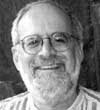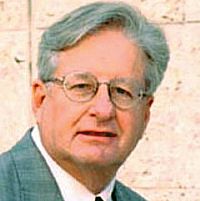The "Systems" Perspective
The individual is best understood through assessing interactions between and among family members and the living systems that the client is connected to. The family is a functioning unit that is more than the sum of its various members.
The actions of one influence all the others...
Development of Family Systems Therapy
Alderian Family Therapy
Alfred Adler (1870-1937)
Key Concepts and Techniques
- Family constellations (or systems)
- Purposeful behaviors
- Birth positions within the family
- Both parents and children become locked in repetitive , negative interactions based on mistaken goals
Multigenerational Family Therapy
Dr. Murray Bowen (1913-1990)
Key Concepts and Techniques
- Focus on patterns across multiple generations
- Triangulation - development of triads in a two against one experience between family members
- Differentiation of self - The psychological separation of intellect, emotion, and independence of the self from others.
Human Validation Process Model
Virginia Satir (1916-1988)
Key Concepts and Techniques
- Emphasis on family connection
- Development of a nurturing triad ~ two people working together for the well being of another
- The importance of connection and meta-connections
- Four communication stances: Blaming, Placating, Super Reasonable, Irrelevance
- A strong belief in congruence or emotional honesty, in which one speaks for oneself.
Experiential Family Therapy
Carl Whitaker (1912-1995)
Key Concepts and Techniques
- Application of existential therapy to family systems therapy
- A focus on choice, freedom, self-determination, growth, and actualization
- Importance of the relationship between the family and therapist
- Maintenance and enhancement of anxiety to use as a motivator for change
- The involvement of the therapist makes a difference
- Utilization of a therapist and co-therapist
Structural-Strategic Family Therapy
Salvador Minuchin (b.1921)
Key Concepts and Techniques
- Symptoms are understood from interactional patterns and sequences within a family
- Changes must occur within the family before the individual symptoms can be eliminated
- Reduce symptoms of dysfunction
- Structural change through modification of family rules and development of more appropriate boundaries
- Interventions include joining, boundary setting, re-framing, unbalancing, enactments, and ordeals.
The "Movements" of Family Therapy
- Forming a relationship between the therapist and family.
- Conducting as assessment using genograms and/or circular or relational questioning.
- Hypothesizing and sharing of meanings.
- Facilitating change through planning, techniques, interventions, enactments, or assignments of tasks.
References:
Corey, Gerald (2012). Theory and Practice of Counseling and Psychotherapy. 9th ed.
Belmont,California: Brooks/Cole. (pp. 433-458).


























